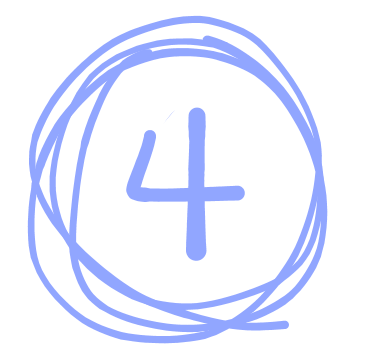
16 Apr What to do when you’ve lost your job
One of our favorite maxims around here is that “every change is a choice”—even if it wasn’t your choice to begin with. Our job is to help you manage the unavoidable threats and opportunities that arise. And that’s exactly what we did for Shainaz when she was unexpectedly laid off last year.
With two toddlers and a stay-at-home partner, Shainaz lost much more than her family’s sole source of income and health insurance. She had lost her mental footing too. In those first few weeks after her layoff, Shainaz admitted that she was wracked with unmanageable anxieties. She was also still struggling with postpartum depression–an often invisible illness for many women. She was between a rock and a hard place. No wonder she felt like she couldn’t breathe.
That was the first place we could help. We know from experience that the best way to face a crisis is by simply acknowledging it. Trauma can scramble your mind and make recovery even harder when you’re in denial or frozen with shame. Losing a job is a loss. So we helped Shainaz stop apologizing and diminishing her feelings. And instead of distracting her, we just listened.
When she could finally allow herself to feel without judgement, a weight began to lift. But there was so much more work to do. While she had slowed down some of those stressful thoughts, she was still debilitated by fear. Her amygdala was stuck into turbo, prompting her brain to pump gobs of stress hormones through her body. Managing basic tasks and decisions nearly impossible for her. Shainaz needed help. Luckily we had a game plan in place.
We’re no brain surgeons here. But we knew that our job was to act as Shainaz’s temporary frontal lobe—so to speak: offering a clear path of measured, rational decisions and actions that could help alleviate some of her immediate anxieties. Of course, not all of these issues or steps may be applicable to you, but we think listing them here could be a good place to start.
We know from experience that the best way to face a crisis is by simply acknowledging it.

Identify WHICH resources & benefits you qualify for
Shainaz’s family had a mortgage, regular medical prescriptions, student load debt, two car loans, and the regular host of bills and expenses. And, as is true for so many of us today, they had little in the way of savings. With our help she applied for unemployment, SNAP, and Medicaid benefits. Within two weeks, she had been approved and the panic began to finally thaw. We also suggested that Shainaz reach out to her financial lenders to see if she could forestall her monthly payments. She was in luck and was able to push off mortgage payments for a full 12 months.
It’s really important to remember that if you pay taxes you have already paid into state assistance programs like Unemployment and Medicaid. That is your money in those programs, specifically designed to help you at this very moment. Every year millions of people are saved by these vital social programs. There is no shame in doing just the same.
There are many other kinds of resources Shainaz didn’t consider—TANF benefits, nonprofit help, food banks, federal programs, and charitable assistance all there to help fill in the gaps. Visit this website to learn more.

Separate what you need from what you want
Shainaz, like many after a layoff, was hamstrung by intrusive and overwhelming anxieties. To help, we asked her to write down all of these thoughts, divided into two categories: things she actually needed to do to survive the next six months and everything else. This is a needs v. wants list, and it helped spur a really important conversation.
Looking at the list, Shainaz realized that most of her needs had already been addressed: her family had secure housing, funding for food, medical insurance, and enough money to cover utilities and car payments. Right on down the list, everything had an answer.
Everything else formed her “wants” list. She wanted another job. She wanted a role that was more fulfilling and sustaining. She didn’t want to be a failure. She didn’t want her partner to be disappointed in her. She didn’t want her children to worry. She wanted control over her life. She didn’t want to have to ask her parents for help. It was an honest list—exactly what we’d asked for. Of all the wants on that list, which could she actually control right now? Well, not much really. In fact, she was already doing as much as she could to address those wants. She was working with us to build a new path forward. Everything else would be resolved in its own time.
Finally, we asked her to think about what could she take responsibility for moving forward. By this we meant: if we were to build a ladder from now to her dream life, what could the first rung look like? We asked her to write those things down too. These would be the foundation of her short-term goals. And, while she might not be able to control all of the changes, she could control her reaction to change.

Get out of your head and into your body
As a working parent of two toddlers, Shainaz was already at a deficit. Like many people, her health had always come last in the family order. After a significant life transition, especially an unexpected one, we can easily forget how to take care ourselves. It’s easy to fall into bad patterns like overeating or overdrinking. So while it may have seemed obvious, we added four required tasks to Shainaz’s daily schedule:
Eat real food. Stress can trigger many complex issues around food. But your body needs good quality fuel to support your emotional and mental life. You eat to live, especially in a crisis.
Follow a sleep routine. Like eating, stress usually decimates our sleep routines. If you’re sleeping less, try adding naps or mindfulness periods to your day. Leave stressful activities, like job applications, for the daylight. Remind yourself that sleeping time is for sleeping: you can worry all you want when you’re awake.
Break a sweat. We won’t even list all of the compelling studies that link exercise to lower stress levels, better blood pressure, cleaner sleep, improved cognition, etc. Even if you’ve never been an athlete, grab a podcast and try walking 20 minutes a day.
Play. Play helps you heal, builds new connections, and reminds you that life isn’t always so serious. Spend 30 minutes a day doing something without any immediate economic or social value: write a poem, learn how to juggle, send your friends a video of you lip-syncing to your favorite song.

Lean on your loved ones
Human beings did not evolve to be solitary creatures. While many of us, especially in the West, are conditioned to believe in the cult of rugged individualism, self-sufficiency always has its limits. Leaning on someone is not the same thing as weakness or dependency. You may believe that you’re going through it alone, but more often than not that’s a choice you make, and often not a wise one. Most of us are lucky to have trusted relationships with people who care for us and want us to flourish.
You don’t need your brother or best friend to give you the best advice, you just need to ask them to be present with you, to listen to your fears, and to give you lasting support. Most importantly, your loved ones will help you see clearly who you’ve always been and the values you’ve always kept. Let them help you out of the forest.

Practice optimism—even if you hate it
There’s really no way around the valleys of despair you’ll fall into on your journey. That’s why it’s so important to add context to these feelings of hopelessness and negativity. Acknowledge how you feel but also question why you’re feeling it. Ask yourself, “do I need to carry this feeling with me this moment or today?” “Are these feelings motivating the best from me, or keeping me down?” Chances are those feelings are ultimately sitting squarely in your path forward.
After the first three weeks, Shainaz was surviving and her physical wellness was coming back. But the lingering trauma was still dragging her down. She had conquered the panic, and quelled the anxieties, but her self-esteem was still wounded.
Even if she still couldn’t see all of the promising things budding under her feet, Shainaz could still enter into a practice of feeling it just the same. On our weekly call we’d take five minutes and ask her to pronounce, out loud, all of the things she was grateful for in this life. And then we’d take a step back and review the work we’d done over the last two months. The point here was to show her all of the good things she did have, and to demonstrate all of the real progress she was making. The headwinds fallacy can be so difficult to spot.

LIVE IN THE PRESENT
So what if Shainaz had lost her job? So what if she was feeling worthless or unmoored? Now what could we do to find her sense of self again? Now what can we do to start on a new chapter of her career for the better? Surely wallowing in the past wouldn’t help much.
We encouraged her to reflect on specific aspects of herself, who she is, what she enjoys doing, and what gets her excited. We challenged her to write down things she learned each day. And we showed Shainaz some simple mindfulness exercises so that when she was with her children, we could practice being with her children, and when she was working she could practice being there too.

create a list of priorities
We stress this exercise a lot at Careerprint. While they can always change, your priorities reflect where you are in the moment. It can be next to impossible to begin to chart a path forward if you’re constantly distracted by the next worry or promise that comes your way. We’ve seen this happen to many job seekers who will thoughtfully dismiss one role before considering an identical position the next day without remembering their choice pattern from the day before.
We asked Shainaz to write a priority list of all the personal and professional aspects of her life that mattered most. Initially she had big entries for each, “family”, “money,” etc. So we asked her to drill down into each, separating some and condensing others. “Money,” for example, was really about family, insofar as her priority was to make enough to take care of her family comfortably. Good, that’s one step down. After this exercise she finally could see how to take concrete steps in her exploration to find her next path.
Acknowledge how you feel but also question why you’re feeling it. Ask yourself, 'do I need to carry this feeling with me this moment?'
THE NEXT STEPs FOR THE NEXT JOB
The healing didn’t happen overnight. It took Shainaz about a month to arrive at a place where she was able to begin. That’s when our real work could start.
We helped her get to work networking and sourcing—invaluable tools for career building. Like many of our clients, Shainaz was initially reticent to network. But through our training she realized that it’s an essential way too fast track your development. It’s not politicking. It’s research. (See our article on networking for more).
Networking helped her practice telling her story and helped to crystalize her life priorities, based on our Six Factors of career choice. That work was critical, as it helped her better understand which threads to follow and which to leave behind. Then we helped with goal setting, encouraging her to make these actionable, measurable, and realistic goals.
The last we spoke, Shainaz was in a completely new place in her life. It had been seven months since her layoff, and she had already garnered several interviews, and had turned down a position just recently. We were thrilled to hear it. It meant that she had learned how to take ownership over her career search, and was rightfully confident in her ability to make the wisest choice when it came. Most importantly, her self-esteem was back.



No Comments